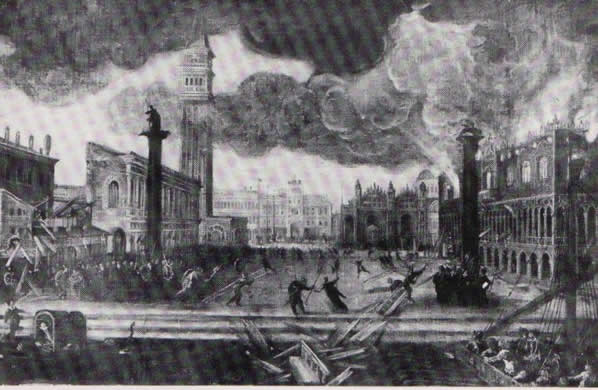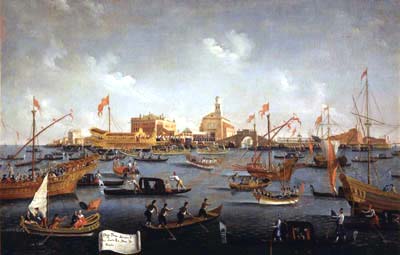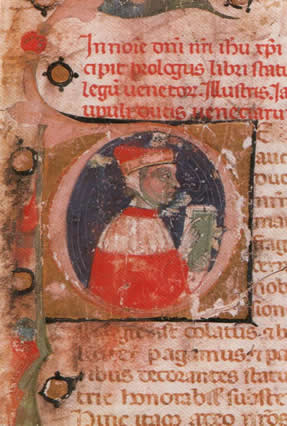The 9th and 10th Centuries were a long period of consolidation and changes in public offices. During this time the population started to be unhappy with the administration, especially since Doges became greedy for power and led to various dramatic episodes. As a result, the management of public affairs was decentralised by tying the Doge’s power to new institutional bodies.
During this period there was a popular uprising against the doge during which the Doge’s Palace was set alight and the slave trade was banned.
In 991 Pietro II Orseolo was elected doge, the architect of the great victories over the Slav Narentine pirates on 18th May 999 and over the Saracens besieging the Byzantine city of Bari in 1002-1003. These triumphs led to Pietro II taking the title “Dux Veneticorum et Dalmaticorum”. Venetian ships could now peacefully sail across the Adriatic and Venice enjoyed a certain independence of Byzantium, although still controlled by a tacit agreement of loyalty. Even today, ten centuries later, the victory over the Dalmatians is remembered with the evocative ceremony of the “Sposalizio col mare” (Marriage to the Sea) in Venice each year.
During the reign of Doge Peter II there was a widespread move to reject adherence to rigid patterns of feudal society, whereby subjects were roughly divided between those who prayed, those who worked and those who fought. In Venice, and perhaps for the first time in Europe, there was opposition to the notion that the dignity of an aristocrat could only be measured in terms of his blazon and lands, thus giving rise to the idea of the nobility of the use and handling of money (previously viewed with scorn), thus strengthening the already powerful Venetian merchant class .
Foreign policy involved countering the activities of the Dalmatian corsairs in the Adriatic and, at the request of Byzantium, the Saracen presence in southern Italy. Together, these created problems for all trade to East, a source of great wealth and special privileges for Venetian merchants, especially following the edict of the Bolla d’Oro.



